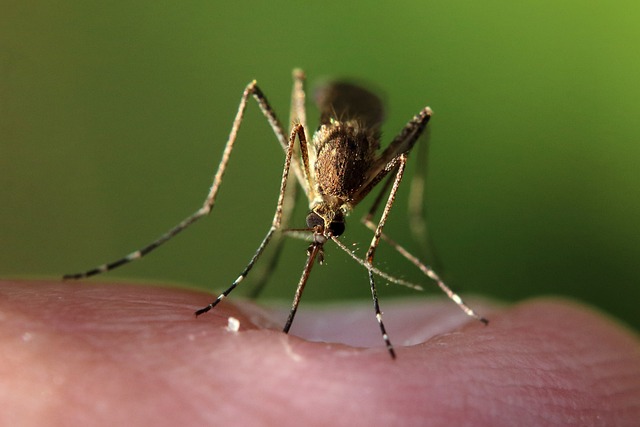Mosquitoes and ticks, common outdoor pests with distinct behaviors, require tailored control strategies. They breed in stagnant water and lush vegetation, respectively, and are attracted to carbon dioxide and body heat. Effective management involves habitat modification, eliminating breeding sites, using repellents, and implementing rodent control solutions, as rodents carry diseases. Creating a mosquito-free and tick-safe outdoor space requires identifying and eliminating breeding grounds, regular maintenance, natural repellents, lawn care, and targeted pest control products. Balancing effectiveness with environmental safety is crucial, avoiding harm to beneficial insects and wildlife through responsible use of rodent control solutions and eco-friendly methods.
Mosquitoes and ticks are more than just outdoor inconveniences; they pose significant health risks. Understanding their habitat, behavior, and life cycles is crucial for effective management. This article delves into these pests’ ecology, focusing on how rodent control solutions play a pivotal role in mitigating mosquito and tick populations. We explore practical strategies for outdoor management, emphasizing safety measures and environmental considerations to ensure a harmonious balance between human activities and nature. By implementing these methods, folks can enjoy the great outdoors with reduced exposure to these vectors of disease.
Understanding Mosquito and Tick Populations: Their Habitat and Behavior
Mosquitoes and ticks are common outdoor pests, each with unique habits and habitats that influence their populations. Understanding their behavior is crucial for implementing effective mosquito and tick control measures. Mosquitoes thrive in stagnant water, breeding grounds that can include discarded containers, bird baths, and even small puddles. They are most active during dawn and dusk, making outdoor activities during these times more comfortable with proper precautions. Ticks, on the other hand, prefer tall grass and dense shrubbery, where they wait for passing hosts to latch onto. They can remain inactive for extended periods, often becoming active only when a potential host is nearby.
Both pests are attracted to certain carbon dioxide levels and body heat, making humans and domestic animals prime targets. In regions with abundant vegetation and humid climates, their populations tend to surge, posing risks to public health. Effective mosquito and tick control involves managing these habitats, eliminating breeding sites, and employing repellents or treatments recommended by pest control professionals. Rodent control solutions can also play a significant role in reducing mosquito and tick exposure, as rodents are known carriers of various diseases transmitted by these insects.
Rodent Control Solutions: The Role in Managing Mosquitoes and Ticks
Rodent control solutions play a significant role in managing mosquito and tick populations, acting as a crucial component in achieving safe outdoor living. These solutions are often underutilized but highly effective in breaking the lifecycle of both pests. Mosquitoes and ticks breed in standing water and damp environments, with rodents serving as primary hosts for various parasites that transmit diseases to these vectors. By controlling rodent populations, you not only reduce the risk of disease transmission but also significantly decrease the overall number of mosquitoes and ticks in your outdoor spaces.
Implementing comprehensive rodent control strategies involves a combination of traps, baits, and habitat modification. Professional services specializing in these methods can be employed to ensure the safety and effectiveness of treatments. This proactive approach is essential, especially in areas with high wildlife activity or known disease outbreaks, as it disrupts the breeding cycle and creates an environment less conducive to mosquito and tick proliferation.
Effective Outdoor Mosquito and Tick Management Strategies
Creating a mosquito-free zone is essential for outdoor enjoyment and overall well-being. One effective strategy is to implement comprehensive pest management, starting with identifying and eliminating breeding grounds. Mosquitoes thrive in stagnant water, so regular inspection and maintenance of outdoor spaces are key. Empty standing water from containers, flower pots, and buckets, and ensure proper drainage to disrupt their life cycle. Additionally, incorporating natural repellents like citronella plants or lavender can provide a safe, chemical-free alternative for outdoor protection.
Ticks, known carriers of diseases, require a multi-faceted approach. Regularly mowing grass and trimming shrubs helps reduce their hiding spots. Using pest control products specifically designed to target ticks, while also employing rodent control solutions to address their food sources, can significantly decrease their population. For added protection, maintaining a buffer zone around your property using natural barriers like gravel or wood chips can create a defensive layer against these pesky invaders.
Safety Measures and Environmental Considerations for Implementing Control Methods
When implementing mosquito and tick control measures, it’s paramount to balance effectiveness with environmental safety. Many conventional methods, while powerful against pests, can harm beneficial insects, birds, and other wildlife. For instance, widespread use of synthetic pesticides can contaminate water sources and disrupt local ecosystems. To mitigate these risks, consider the following:
First, target your efforts. Use targeted applications rather than broad-spectrum treatments to minimize exposure of non-target species. This approach is especially crucial when dealing with mosquito breeding sites like standing water, where biological controls or eco-friendly larvicides can be more effective and less harmful. Additionally, implement rodent control solutions humanely and responsibly, employing live traps or species-specific poisons to prevent unintended casualties among other wildlife.
Mosquito and tick control is a multifaceted approach that integrates understanding ecological dynamics, implementing effective management strategies, and adhering to safety measures. By addressing rodent control solutions and considering environmental impacts, we can create safer outdoor living spaces. Balancing human health protection with ecosystem preservation is key to achieving sustainable results in the battle against these pests.
